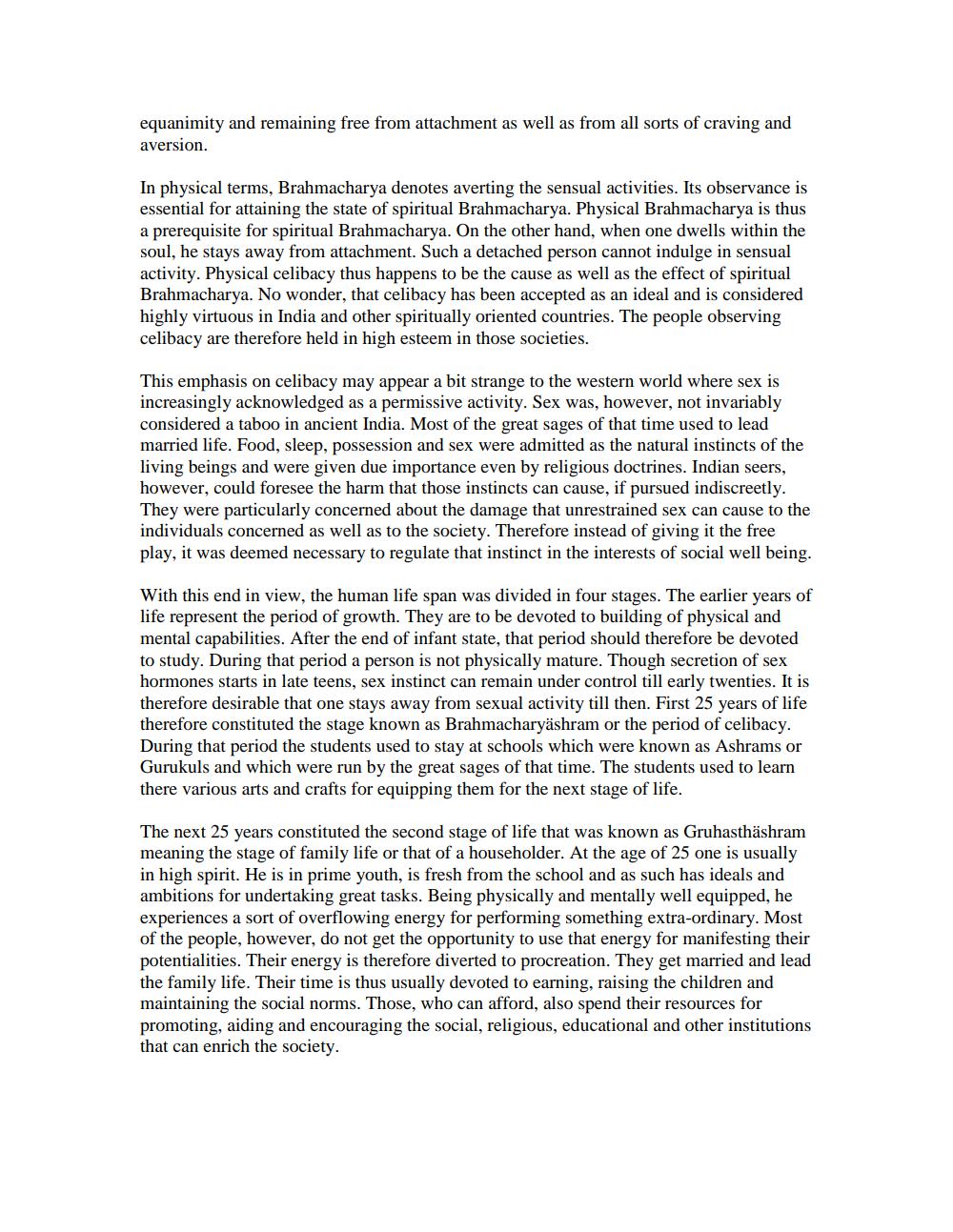________________
equanimity and remaining free from attachment as well as from all sorts of craving and aversion.
In physical terms, Brahmacharya denotes averting the sensual activities. Its observance is essential for attaining the state of spiritual Brahmacharya. Physical Brahmacharya is thus a prerequisite for spiritual Brahmacharya. On the other hand, when one dwells within the soul, he stays away from attachment. Such a detached person cannot indulge in sensual activity. Physical celibacy thus happens to be the cause as well as the effect of spiritual Brahmacharya. No wonder, that celibacy has been accepted as an ideal and is considered highly virtuous in India and other spiritually oriented countries. The people observing celibacy are therefore held in high esteem in those societies.
This emphasis on celibacy may appear a bit strange to the western world where sex is increasingly acknowledged as a permissive activity. Sex was, however, not invariably considered a taboo in ancient India. Most of the great sages of that time used to lead married life. Food, sleep, possession and sex were admitted as the natural instincts of the living beings and were given due importance even by religious doctrines. Indian seers, however, could foresee the harm that those instincts can cause, if pursued indiscreetly. They were particularly concerned about the damage that unrestrained sex can cause to the individuals concerned as well as to the society. Therefore instead of giving it the free play, it was deemed necessary to regulate that instinct in the interests of social well being.
With this end in view, the human life span was divided in four stages. The earlier years of life represent the period of growth. They are to be devoted to building of physical and mental capabilities. After the end of infant state, that period should therefore be devoted to study. During that period a person is not physically mature. Though secretion of sex hormones starts in late teens, sex instinct can remain under control till early twenties. It is therefore desirable that one stays away from sexual activity till then. First 25 years of life therefore constituted the stage known as Brahmacharyashram or the period of celibacy. During that period the students used to stay at schools which were known as Ashrams or Gurukuls and which were run by the great sages of that time. The students used to learn there various arts and crafts for equipping them for the next stage of life.
The next 25 years constituted the second stage of life that was known as Gruhasthäshram meaning the stage of family life or that of a householder. At the age of 25 one is usually in high spirit. He is in prime youth, is fresh from the school and as such has ideals and ambitions for undertaking great tasks. Being physically and mentally well equipped, he experiences a sort of overflowing energy for performing something extra-ordinary. Most of the people, however, do not get the opportunity to use that energy for manifesting their potentialities. Their energy is therefore diverted to procreation. They get married and lead the family life. Their time is thus usually devoted to earning, raising the children and maintaining the social norms. Those, who can afford, also spend their resources for promoting, aiding and encouraging the social, religious, educational and other institutions that can enrich the society.




